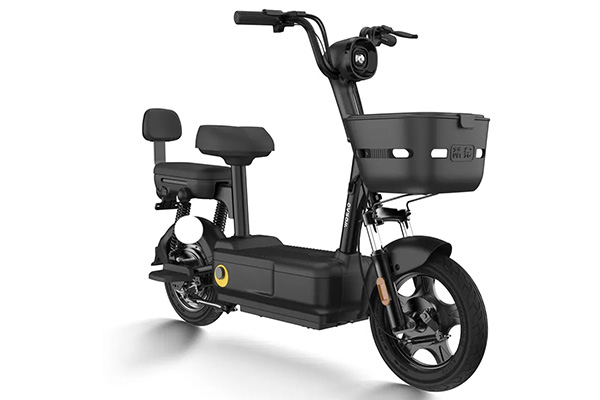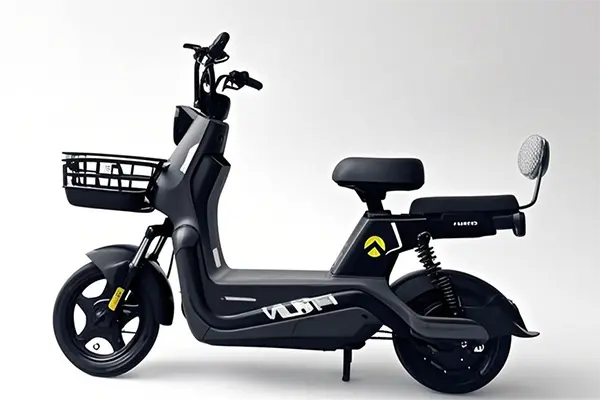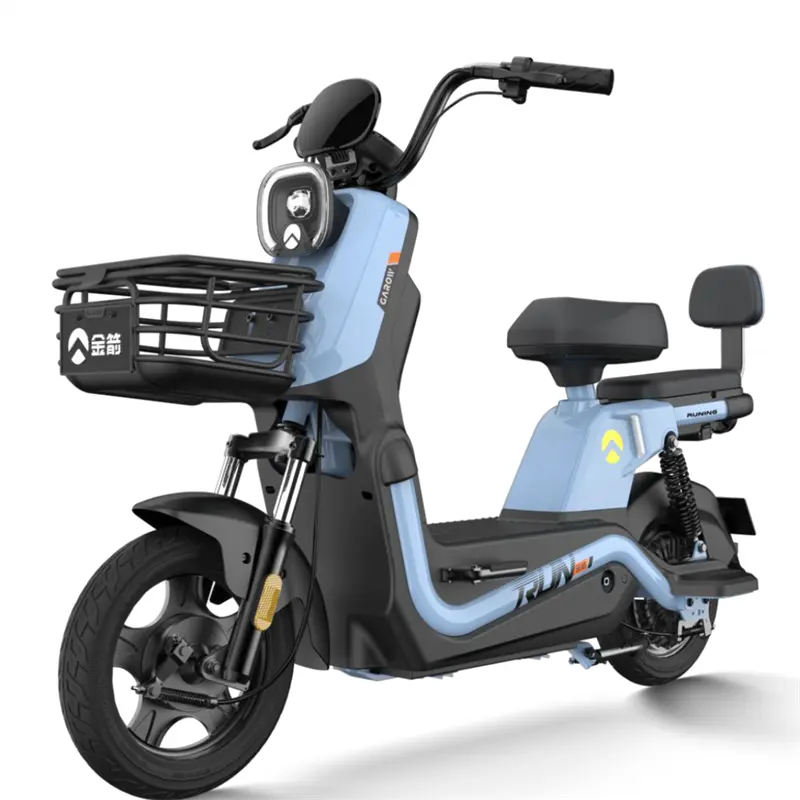At its core, an electric road bike, or road e-bike, is a lightweight, performance-oriented bicycle designed for paved surfaces, enhanced with an integrated electric motor and battery. Unlike some heavier e-bikes built for utility, e-road bikes prioritize aerodynamics, speed, and a riding experience that feels remarkably close to their non-electric counterparts. The goal isn’t to replace human effort but to augment it. Think of it as having a constant tailwind at your back, making every ride smoother and more enjoyable.
The technology has come a long way. Early e-bikes were often clumsy, with bulky batteries and jarring motor engagement. Today’s models are sleek and sophisticated. The battery and motor are often so well-integrated into the frame that at a glance, you might not even realize it’s an e-bike. These bikes are engineered to be nimble and responsive, allowing the rider to maintain higher average speeds and conquer challenging terrain like steep hills with a fraction of the effort. They are perfect for those who want to ride longer, faster, or simply keep up with a speedier group of friends. The evolution of this bike category has been truly incredible to watch.

How Does a Road E-Bike Compare to a Traditional Road Bike?
The most significant difference lies in the electric assist. A traditional road bike relies solely on the rider’s power. An e-road bike uses a system called pedal assist, where the motor adds power as you pedal. You still have to do the work, but the bike multiplies your effort. This means you can go faster and cover longer distances without becoming exhausted. While a traditional road bike might be lighter, the gap is closing. Modern e-road bikes use lightweight carbon fiber or aluminum frames and compact motor systems to keep the weight down.
Performance-wise, the experience is surprisingly similar until you need that extra boost. On a flat road, a fit cyclist might not even engage the motor. But once you hit a challenging climb, the electric motor seamlessly kicks in, transforming a grueling ascent into a manageable spin. This is a game-changer for many. It allows riders of varying fitness levels to enjoy the same routes together. Furthermore, many modern e-road bikes feature advanced components like hydraulic disc brakes for superior stopping power, which is essential when dealing with the higher speeds these bikes can achieve. It’s not about cheating; it’s about expanding the possibilities of road cycling.
Are Electric Bikes Worth the Investment for Your Commute?
Absolutely. For a daily commuter, an electric bike can be a transformative investment. The primary benefit is arriving at your destination fresh and ready for the day. The pedal assist feature means you can tackle your commute without breaking a sweat, eliminating the need for a post-ride shower at the office. This makes the bicycle a far more practical alternative to a car or public transit, especially for journeys between 5 to 15 miles. You can cruise through city streets and bike lanes with ease.
Financially, the case for a commuter bike is compelling. While the initial cost is higher than a regular bike, the savings on fuel, parking, insurance, and public transport fares add up quickly. A 2022 study by the National Institute for Transportation and Communities found that e-bike riders took more and longer trips than when they rode conventional bikes. Plus, you get the added benefit of consistent, low-impact physical activity. Using an e-bike to run errands or for your daily commute is not only efficient but also great for your well-being. E-bikes make it easier to choose two wheels over four, reducing traffic congestion and your carbon footprint.
What Key Features Should I Look for When Buying an E-Bike?
Choosing an e-bike involves looking beyond the paint job. As a manufacturer, I tell my partners to focus on the “big three”: the motor, the battery, and the frame.
- The Motor: Look for a reputable brand (like Bosch, Shimano, Brose, or Mahle). There are two main types: mid-drive motors (located at the pedals) and hub-drive motors (in the wheel). Mid-drives offer a more natural, balanced feel and are typically found on higher-end bikes. Hub drives are often more affordable and are great for general commuting.
- The Battery: Capacity, measured in watt-hours (Wh), determines your range. A larger Wh number means you can ride a bike for longer on a single charge. Look for batteries that are UL certified for safety—this is a non-negotiable for us. Removable batteries are also a huge plus, as they allow for convenient indoor charging.
- The Frame and Components: The frame material (aluminum or carbon fiber) affects weight and ride quality. Beyond that, check the quality of other components. Reliable gears from Shimano or SRAM and powerful hydraulic disc brakes are crucial for safety and performance. You want a bike that is built to handle the demands of daily riding.
Here is a quick comparison table for motor types:
| Feature | Mid-Drive Motor | Hub-Drive Motor |
|---|---|---|
| Location | Center of the bike, at the pedals. | In the hub of the front or rear wheel. |
| Feel | Natural, balanced ride. Senses rider’s torque. | Feels like being pushed or pulled. |
| Best For | Hilly terrain, mountain biking, performance. | Flat terrain, commuting, affordability. |
| Efficiency | Generally more efficient and better for battery life. | Can be less efficient on steep hills. |
| Maintenance | More complex; changing a tire is standard. | Simple; but changing the motored tire is harder. |

How Powerful Should the Motor on My Electric Bicycle Be?
The power of an electric motor is measured in watts (W) and torque (Nm). For most riders, a motor with 250W to 500W is more than sufficient. In many regions, including Europe, 250W is the legal limit for a bicycle to be classified as an e-bike without needing registration. It’s not just about raw power; it’s about how that power is delivered. Torque is arguably more important, as it determines the bike’s ability to accelerate and climb hills. A motor with 50-85 Nm of torque will make even steep hills feel manageable.
When considering power, think about your primary use. If you live in a flat area and mainly use your bike for a leisurely commute, a 250W motor with 50 Nm of torque is your best bet. If you plan on tackling serious hills, carrying cargo, or want a more performance-oriented ride, opting for a motor in the 500W range with 70 Nm or more of torque is a better choice. Remember, a more powerful motor will drain the battery faster, so it’s a trade-off between power and range. The key is to get the bike with a balanced system that suits your riding style. For those seeking maximum performance, we offer models like our YONSLAND RZ700 High speed electric ebike, which are engineered for riders who demand more power and speed.
What Are the Different Classes of E-Bikes and Why Do They Matter?
In the United States and other regions, e-bikes are often categorized into three classes. Understanding these is crucial as it dictates where you can legally ride on the road or on bike paths.
- Class 1: The motor provides assistance only when you pedal (pedal-assist) and cuts off at 20 mph. These bikes are class 1 by default in many places and are generally permitted wherever traditional bikes are.
- Class 2: These e-bikes have a throttle, meaning the motor can propel the bike even when you’re not pedaling. The assistance also cuts off at 20 mph.
- Class 3: These are also pedal-assist only (no throttle), but the electric motor provides assistance up to 28 mph. They are often called “speed pedelecs” and may have more restrictions on where they can be ridden.
For my clients, it’s vital that the bikes we produce comply with these local regulations. For example, a Class 3 e-bike might not be allowed on multi-use bike paths. A road e-bike is often a Class 1 or Class 3 machine, designed to help maintain speed over long distances. Most bikes like these are built for performance. Always check your local laws to ensure the bike you buy an electric bike is appropriate for where you want to ride.

Can You Still Get a Good Workout on an Electric Bike?
This is one of the biggest misconceptions about e-bikes. The answer is a resounding yes! A 2019 study from Brigham Young University found that riders on pedal-assist e-bikes got nearly as much exercise as those on conventional bikes. The key is that e-bikes don’t require you to stop working; they just make the work easier. You are still pedaling, turning the cranks, and exerting energy.
The difference is the amount of effort required. On an e-bike, you can choose your level of assistance. On a low-assist setting, you’re doing most of the work, and the motor just smooths out the ride. This allows you to ride a bike for longer periods or tackle routes you might otherwise avoid. Because riding an electric bike is so enjoyable, people tend to ride more often and for longer distances, resulting in more total physical activity over time. E-bikes can help you stay active, especially if you have physical limitations, are recovering from an injury, or are just getting back into fitness.
Is a Folding Electric Bike a Practical Choice for Urban Riders?
For the ultimate urban commuter, a folding electric bike is an incredible tool. These bikes are designed for multi-modal travel. You can ride your folding electric bike to the train station, fold it up, carry it on board, and then unfold it to complete the last leg of your journey. They solve the “last mile” problem perfectly. Their compact size when folded also makes them ideal for people living in small apartments or with limited storage space at the office.
While they may not have the top-end performance of a full-size road e-bike, they aren’t meant to. These bikes prioritize portability and convenience. They are perfect for navigating crowded city streets, and the electric assist makes quick work of short, punchy hills and bridges. It’s worth noting that modern folding electric bikes are far more robust and reliable than their early predecessors. If your daily commute involves a mix of cycling and public transport, or if storage is your main concern, you should seriously consider a folding electric bicycle.
What Should Off-Road Enthusiasts Look for in a Mountain Bike Model?
While this article focuses on road bikes, it’s important to touch on electric mountain bikes (e-MTBs), as the core technology is shared. For off-road riding, the requirements change. An e-MTB needs to be exceptionally durable. Key features to look for include:
- A Powerful Motor with High Torque: You need a motor that can help you power up steep, technical climbs. A mid-drive motor is almost always the best bet here for its balance and natural power delivery.
- Full Suspension: A front fork and rear shock are essential to absorb the bumps and drops of rough trails. This provides a smoother ride and better control.
- Robust Frame and Wheels: The bike must be built to handle serious abuse. Look for thru-axles for wheel stiffness and durable, wide rims paired with aggressive tires.
- Strong Brakes: Large-rotor hydraulic disc brakes are non-negotiable for controlling your speed on long descents. The added weight of the bike and motor makes stopping power paramount.
An e-MTB allows you to skip the grueling fire-road climbs and save your energy for the fun downhill sections. It lets you fit more laps into a day and explore trails that might have been out of reach on a regular bike. It has truly revolutionized the world of mountain bike racing and recreational trail riding.
How Do We Ensure Quality and Safety in Every E-Bike We Build?
This is the question that matters most to me as a manufacturer and to my B2B clients like David. A bike is only as good as its weakest component. For us, quality control is a multi-stage process. It begins with sourcing high-quality raw materials and components from trusted suppliers. Every frame is tested for structural integrity, and every weld is meticulously inspected.
The most critical component is the battery. We ensure all our ebike and electric vehicle batteries meet or exceed international safety standards like CE and UL. This certification is not just a sticker; it’s a guarantee that the battery has undergone rigorous testing for fire safety, electrical shock, and mechanical hazards. We also test every motor, brake system, and controller before it’s installed.
Finally, every complete electric bicycle undergoes a final quality assurance check where we test the gears, brakes, and electrical system to ensure everything functions perfectly. This commitment to quality gives our partners confidence that they are selling a safe, reliable, and high-performing electric bike to their customers. Providing reliable parts is also key, which is why we maintain a full inventory of accessories, from simple things like a universal side mirror to critical components like brake calipers. It’s this end-to-end focus on quality that builds long-term trust.
Key Takeaways for Your E-Bike Journey
As we look toward the bikes of 2025, it’s clear that the technology will only continue to improve. Electric bikes offer a powerful solution for transportation, fitness, and fun.
- Choose the Right Type: An electric road bike is built for speed and distance on pavement, while a mountain bike is for trails, and a folding electric bike is for urban portability.
- Focus on the Core Components: A quality motor, a safe and long-range battery (check for UL certification!), and a solid fram
e with reliable components like hydraulic disc brakes are essential. - Understand the Law: Know the difference between Class 1, 2, and 3 e-bikes to ensure you can ride your new bike legally in your area.
- You Still Get a Workout: Riding an electric bike is great exercise. It encourages you to ride more often and for longer, boosting your overall physical activity.
- It’s a Smart Investment: For a daily commuter, an e-bike can save you significant money on transportation costs over time, all while improving your health and reducing your environmental impact. It’s a choice that is both practical and exhilarating.
Post time: Aug-04-2025




